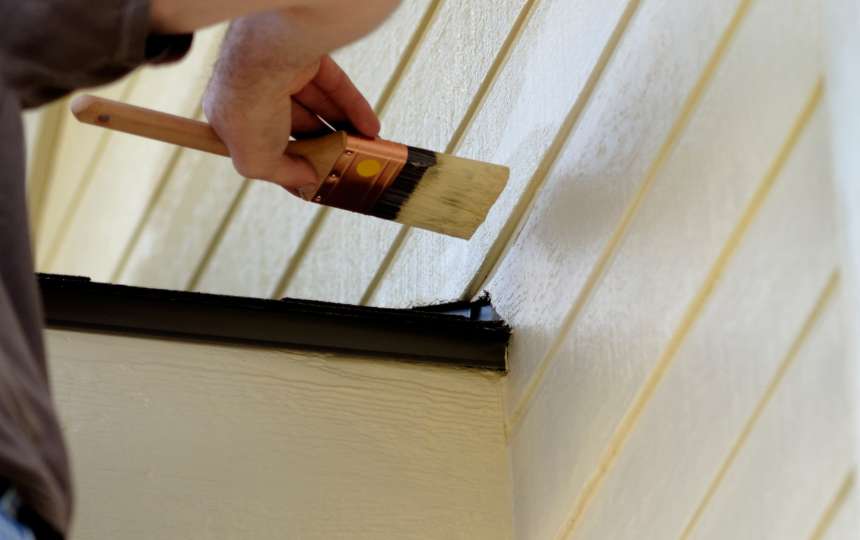A fresh coat of paint can do wonders for the appearance of your home’s exterior. Whether you want to update the color or protect the surface from the elements, a well-executed painting project can transform your home’s curb appeal. To ensure a flawless and long-lasting result, we’ve compiled a list of top tips to guide you through your exterior painting project. From preparation to finishing touches, follow these expert recommendations for a successful and stunning outcome.
1. Plan and Prepare
Before you pick up a paintbrush, take the time to plan and prepare for your exterior painting project. Here’s what you need to do:
- Select the Right Paint: When choosing the appropriate paint type, consider the climate, the condition of your exterior surface, and the desired finish. Opt fora high-quality paint that offers durability and weather resistance.
- Inspect and Repair: Thoroughly examine the exterior surfaces for any signs of damage, such as cracks, peeling paint, or rot. Repair and patch these areas before painting to ensure a smooth and even application.
- Clean the Surface: Use a pressure washer or scrub brush to remove dirt, grime, and mildew from the surface. This step ensures proper paint adhesion and prevents contaminants from affecting the finish.
- Protect Surrounding Areas: Cover windows, doors, landscaping, and any other areas that you don’t want to be painted. Use drop cloths or plastic sheets to shield surfaces from paint splatters.
2. Invest in Proper Tools and Equipment
Having the right tools and equipment is essential for achieving professional-looking results. Here are some key items you’ll need:
- Paint Brushes and Rollers: Choose high-quality brushes and rollers suitable for your painting surface. Brushes and rollers are designed for smooth surfaces, textured surfaces, and corners or edges.
- Extension Poles: Invest in extension poles to reach high areas without ladders. This ensures safety and allows for a more straightforward application.
- Paint Sprayer (Optional): If you have a larger area to paint or want a more efficient application, consider using a paint sprayer. This tool can save time and ensure an even coat, but it requires proper technique and protection for surrounding areas.

3. Proper Surface Preparation
Proper surface preparation is the key to a flawless exterior paint job. Follow these steps to prepare your surfaces:
- Scrape and Sand: Use a scraper or sandpaper to remove any loose or peeling paint. Smooth out rough areas to create a clean surface for the new paint to adhere to.
- Repair and Fill: Fill any cracks, holes, or gaps with an appropriate filler or caulk. This step ensures a seamless finish and prevents moisture penetration.
- Prime the Surface: Apply a primer to bare or repaired areas to promote better adhesion and ensure consistent color coverage. Priming also helps seal the surface and provide a more durable finish.
4. Choose the Right Painting Technique
When painting your home’s exterior, the proper technique can make a significant difference. Here are some tips to ensure a smooth and professional-looking finish:
- Start from the Top: Start painting from the house’s top and work your way down. This helps prevent paint drips and allows for a more controlled application.
- Use Proper Brushing and Rolling Techniques: Apply paint using smooth and even strokes. Overlap each stroke slightly to ensure complete coverage.
- Follow Paint Drying and Recoating Times: Allow enough time for each coat of paint to dry before applying the next one. Follow the manufacturer’s instructions for recommended drying times.
- Apply Multiple Thin Coats: It’s best to apply multiple thin coats rather than one thick coat. This ensures better coverage, durability, and a more consistent finish.
5. Finish with Care
The final touches can significantly impact the overall appearance of your exterior paint job. Here’s what you should do to finish your project with care:
- Inspect for Touch-ups: Once the paint has dried, inspect the entire surface for imperfections or missed spots. Touch up any areas that require additional coverage or correction.
- Clean Up Properly: Dispose of paint cans, brushes, and other materials according to local regulations. Clean brushes and rollers thoroughly using the appropriate cleaning agents.
- Protect Your Investment: Regularly maintain your newly painted exterior by cleaning it periodically and addressing any issues promptly. This will help preserve the integrity and appearance of the paint job.
By following these top tips, you’ll be well-equipped to confidently tackle your exterior painting project and achieve a flawless result. Remember, proper planning, preparation, and attention to detail are key to ensuring a long-lasting and visually stunning finish. Happy painting!
You may also like to take a look at some of these great resources:
- Why Ignoring Roof Damage Can Be Expensive
- What Is Metal Roofing, And What Are Its Benefits?
- The Financial Benefits of James Hardie Siding
- What Are The Benefits Of Having New Siding Installed On Your Home?
- Should You Insulate Your Attic Yourself Or Hire A Professional?
Also, here are some resources to help you select a reputable contractor:
- How to Hire a Roofing Contractor: the Ultimate Checklist
- How to Avoid Being Scammed by a Roofing Contractor
GET A FREE ROOF HEALTH REPORT ON YOUR ROOF
Finally, we thought you’d like to know about our Shingles Styles & Colors page, where you can scroll down to our DESIGN Eye Q section. Here, you can upload a photo of your home and “try on” the different Owens Corning asphalt roofing shingle colors directly from our website to better understand how your color choice will affect your home’s overall appearance.
It takes a few minutes to upload your home picture and select a shingle color. You can also adjust the siding and trim color.
Let’s schedule a time for your Free Roof Inspection. Book Online Here!




